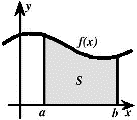Math in the Middle Institute Partnership

Department of Mathematics: Master of Arts in Teaching, Exam Expository Papers
Date of this Version
7-2009
Abstract
Many different types of games involve the use of numbered dice. The most common type of die used is the standard six-sided die with the numbers one through six used on its six sides. What if there was another way of numbering a set of dice (using only positive integers) that would create the same probability outcomes as those of a standard set of dice? The February 1978 issue of Scientific American reports that George Sicherman discovered such a numbering (Broline, 1979). Sicherman discovered that two cubic die numbered 1-2-2-3-3-4 and 1-3-4-5-6-8 have the same sum probabilities as do the standard set of cubic dice (both labeled 1-2-3-4-5-6). This paper will explore his findings.


Comments
In partial fulfillment of the requirements for the Master of Arts in Teaching with a Specialization in the Teaching of Middle Level Mathematics in the Department of Mathematics. Gordon Woodward, Advisor July 2009